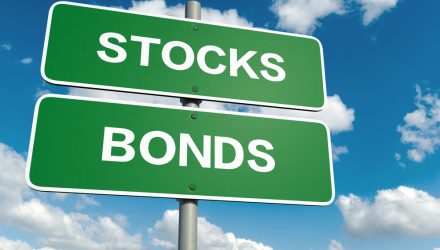The 60-40 stock-bond split got a lot of flak as being outdated during the height of the extended bull market and especially when yields went south. Enter the coronavirus pandemic, and the tune has sort of changed for the 60-40 portfolio and in certain instances, the strategy could still be relevant.
“The traditional 60-40 portfolio, which invests 60% in the S&P 500 and the rest in benchmark Treasurys, wiped out its 2020 loss after equities’ massive comeback from the historic coronavirus sell-off. The Vanguard Balanced Index Fund, which mirrors the 60-40 rule, turned positive for the year in the previous session and rose another 0.8% Thursday,” a CNBC article noted.
“The 60-40 split is typically a rule of thumb for retirement allocation for its low volatility and steady income,” the article added. “It offers more exposure to higher-yielding stocks while having a buffer with low-risk fixed income investments when things go south. This strategy has worked better this year than simply owning the S&P 500, which is still down 3.6%.”
“With yields low or negative, I think it strains how much investors should allocate to this space,” said Jim Paulsen, chief investment strategist at the Leuthold Group. “The question is not whether investors should adopt a balance … but rather whether much of the traditional fixed-income arena is still a viable alternative.”
“Investors may opt to hold high-quality, high-dividend paying stocks as a surrogate for bonds” going forward, Paulsen said.
Investors looking at a mix of equities and bonds can do so with exchange-traded funds (ETFs) like the following:
- Goldman Sachs Equal Weight U.S. Large Cap Equity ETF (GSEW). GSEW seeks to provide investment results that closely correspond, before fees and expenses, to the performance of the Solactive US Large Cap Equal Weight Index (GTR). The fund seeks to achieve its investment objective by investing at least 80% of its assets (exclusive of collateral held from securities lending) in securities included in its underlying index. The index consists of equity securities of large capitalization U.S. issuers. The index is an equal-weight version of the Solactive US Large Cap Index, a market capitalization-weighted index that includes equity securities of approximately 500 of the largest U.S. companies.
- Goldman Sachs Access Investment Grade Corporate Bond ETF (GIGB). GIGB seeks to provide investment results that closely correspond to the performance of the FTSE Goldman Sachs Investment Grade Corporate Bond Index. The fund seeks to achieve its investment objective by investing at least 80% of its assets (exclusive of collateral held from securities lending) in securities included in its underlying index. The index is a rules-based index that is designed to measure the performance of investment-grade, corporate bonds denominated in U.S. dollars that meet certain liquidity and fundamental screening criteria.
For more market trends, visit ETF Trends.








